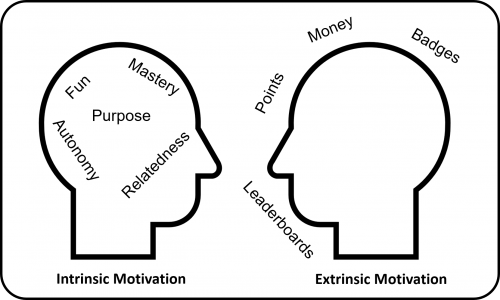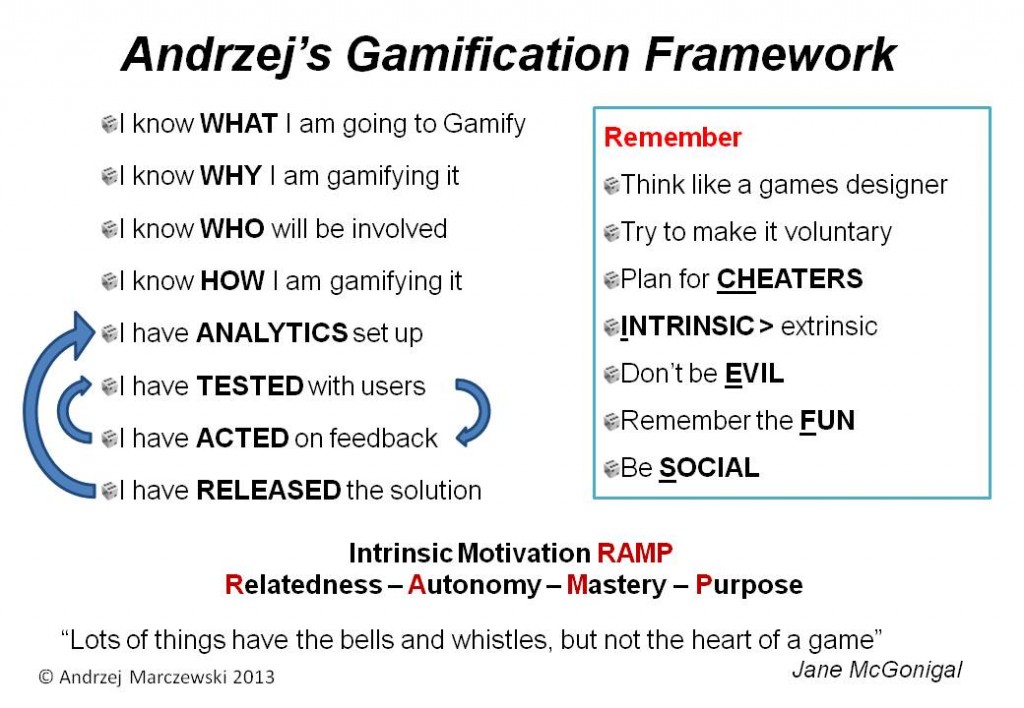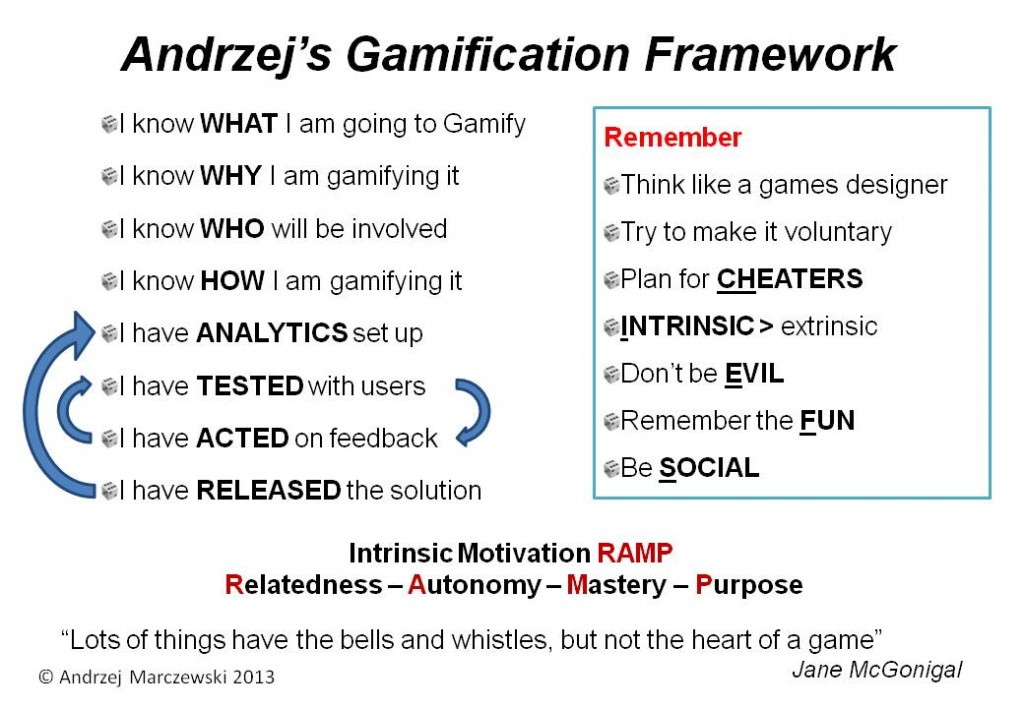Well, this week was going to be some thoughts around a conversation with Ian Bogost. However, that will have to wait until I have more time to actually formulate a decent set of arguments 🙂
In the mean time, I wanted to put out the little “framework” I proposed in the presentation so many of you lovely people have viewed (over 500 on slideshare at last count – so massive thanks!!)
Basically this is a take on many other peoples attempts at defining a simple framework (I read about Kevin Werbach’s D6 framework the day after my presentation for example). It has no clever abbreviations or acronyms (WWW HATTAR seems daft)
Click the image above to download the Framework as a PDF
The first part is a series of 8 questions to ask yourself as you embark on your gamification adventures. I have it printed on my wall in the office.
- I know WHATI am going to Gamify
- You must be totally sure what the activity(s) is that you are going to gamify.
- I know WHYI am gamifying it
- Just as important as what is why. What do you hope to gain from this project?
- I know WHOwill be involved
- Who are your players? You need to know that to be really able to engage with them.
- I know HOWI am gamifying it
- Once you know What, Why and Who, it is time to work out what you are going to do to gamify it all. What elements and ideas will work best for you system? Are you going to employ rewards or are you going to work purely with intrinsic motivators it will be different every time.
- I have ANALYTICSset up
- You have to have metrics and analyitcs of some form – otherwise, how do you measure success, check it is working, find choke points and also report back to people!?
- I have TESTEDwith users
- You must test anything like this with the target audience. They are the ones who will be involved, not you and the designers.
- I have ACTEDon feedback
- Colleting feedback from testing is only beneficial if you actually act upon it. If the players hate your favourite idea, you have to get rid of it!
- I have RELEASEDthe solution
- Finishing and releasing are different. Silently pushing your new system out there is pointless. Make some noise about it, get people on board before they have even seen it!
You can repeat 6 and 7 in a loop as much as needed, then you need to repeat all the steps from 5 to 8 on a regular basis. Collect feedback and iterate improvements and add new elements to keep it interesting.
The second part of that slide is a little list of things to remember about gamification.
- Think like a games designer
- Like it or not, you are now part games designer. As Jesse Schell says, to be a games designer just say to yourself “I am a games designer”
- Try to make it voluntary
- Volunteers make much better players than those forced!
- Plan for CHEATERS
- Plan for cheaters, it is in some humans nature to try and cheat the system – especially if there is an extrinsic reward at stake
- INTRINSIC > extrinsic
- Intrinsic motivation is always more powerful than extrinsic. That said, at times extrinsic motivation may be all you have to get a system kick-started – but you cannot rely on it for long.
- Don’t be EVIL
- Don’t be evil. This is not your opportunity to use the people in your new gamified system – they will catch you out and reject the system.
- Remember the FUN
- Try to remember that a bit of fun (however you wish to describe it) can make almost anything a little more bearable.
- Be SOCIAL
- Playing alone is fine, but playing with other people is always better. Social mechanics are essential for long term engagement.
Hopefully a more creative post next week J
Similar Posts:
- A framework for creating play-like systems
- But What If They Get Addicted To Your Gamified System?
- 4 Simple Questions To Transform Your Gamification Implementation





2 thoughts on “Simple Gamification Framework”